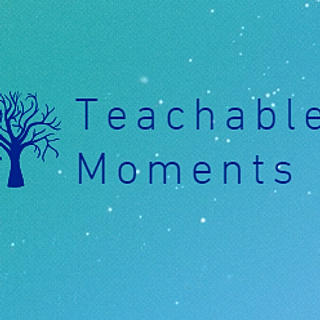Go Fish!
- Chelsea C
- Jun 29, 2016
- 3 min read

This is one of my favorites and go-to lessons for when I'm in a jam and need to think of something fast.
Here's what you'll need:
1. Notecards (if you're really feeling crafty, cut paper in the shapes of fish and/or use colored paper!)
2. A list of questions for your chapter, section, review, etc. There should be about 15-20 per stack, and at least three stacks for groups who get done faster than others.
3. Markers to label the cards with
Set up:
1. Label half of the cards with a “Q” on one side, and the other half with “A”
2. On the other side of the “Q” cards, write your review questions. Write your answers to these questions on the back of the “A” cards
3. Keeping your questions and answer cards together, place one stack at each group, leaving the answers and questions face down (don’t forget to shuffle them)
The rules:
Have students split into groups (if there's 15-20 questions in a deck, four students per group is ideal). To start, have students reach into the pond for three cards to start with. Each group should have one student start (which can be chosen by oldest or youngest). He or she can ask the other players if they have the matching question or answer card to go with what they have in their hand. To make the game last longer, make a rule that students have to ask one specific person instead of the entire group. If someone has the card, they must give it to the other player, who then makes a pair. If no one has the matching card, the player goes fishing for another card and ends their turn. If the player can make a pair with their starting hand or from another player’s card, they should continue to make as many pairs as possible until they either run out cards in their hand or no one can help them. In the event that they run out of cards in their hand, they simply draw one and end their turn. The game ends when all pairs have been made, where the winner is the player with the most pairs.
Alternative rules:
*You'll need painter's tape for this one*
Use the tape to make two "ponds" on the ground big enough so that they can't easily reach into the pond without really reaching for the cards. Then put your "A" cards in one pond and your "Q" cards in the other.
This time, have students work in pairs. They start off picking a "Q" card from the first pond, but there's a catch: they're not allowed to go inside the pond or they'll "drown." Instead, they have to work together to reach in. When they get their "Q" card, they need to work together to solve the question, then race to the "A" pond and fish for the answer. When they've got their match, they go to either you (the teacher) or the answer-checker to see if they've got a match. If they do, they continue to pick "Q" cards, making pairs one-by-one. If their cards aren't a match, then they need to return the "A" card to its pond, and work toward the correct answer.
The game ends when the ponds are empty, and the winning pair is the one who makes the most pairs.
Here are some suggestions for English lessons: 1. Matching characters to their descriptions
2. Matching words to their definitions
3. Matching examples to literary devices
Here are some suggestions for Math lessons:
1. Matching fractions to their simplified or mixed versions
2. Matching linear equations to their name
3. Matching a graph to it's equation
Here are some suggestions for Science lessons:
1. Matching the atomic name to its symbol
2. Matching pictures of the planets to their names
3. Matching the parts of a cell to their functions



Comments